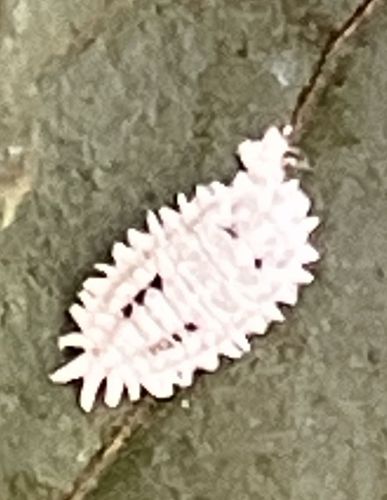Mealybug
Scientific Name: Pseudococcidae (Family)
Order & Family: Hemiptera, Pseudococcidae
Size: Typically 1-4 mm (0.04-0.16 inches) long.

Natural Habitat
Found on a wide variety of plants, both indoors and outdoors, in warm and humid environments. They often hide in crevices, leaf axils, and undersides of leaves.
Diet & Feeding
Mealybugs are sap-sucking insects. They feed on plant sap using their stylets (piercing-sucking mouthparts), extracting nutrients from the phloem of host plants.
Behavior Patterns
Mealybugs are usually slow-moving or sessile once settled on a host plant. Females often lay eggs in cottony, waxy sacs (ovisacs) on the plant. They can reproduce rapidly, and some species are parthenogenetic (reproduce without fertilization). They excrete a sugary substance called 'honeydew', which can lead to sooty mold growth.
Risks & Benefits
Mealybugs are primarily considered pests in agriculture and horticulture. They can cause significant damage to plants by stunting growth, deforming leaves and fruits, and transmitting plant viruses. Honeydew excretion attracts ants and can lead to unsightly sooty mold, which reduces photosynthesis. There are no known benefits, and they pose no direct risk to humans beyond plant damage.
Identified on: 10/22/2025